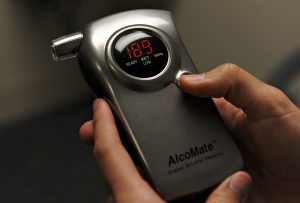Search
Infrastructure Bill Breathalyzer Won’t Be What You Think
 President Joe Biden’s Investment and Infrastructure and Jobs Act (IIJA) does require automakers to install advanced impairment detection technology, and sets a timeline for doing so. It is up to the transportation department to decide what technology to use.
President Joe Biden’s Investment and Infrastructure and Jobs Act (IIJA) does require automakers to install advanced impairment detection technology, and sets a timeline for doing so. It is up to the transportation department to decide what technology to use.
As part of vehicle safety measures designed to determine if the driver may be impaired, breathalyzers are one option. But what the government really wants is something that will passively monitor the performance of the driver to identify whether that driver my be intoxicated. The highway traffic safety administration is also in favor of such technology.
In order for the technology to do it’s job it must be “advanced” and “passive.” It will be seamlessly placed into cars allowing the vehicle to accurately identify and measure driver impairment through driver performance. This anti drunk driving technology will also measure driver intoxication by analyzing the driver’s blood alcohol level. According to the National Highway Traffic Safety Organization, the monitoring systems being considered do not include ignition interlock devices.
Mothers Against Drunk Driving Has Already Made Suggestions
MADD was instrumental in the drafting and passage of this legislation, and have indicated that such AIDP will:
- Measure impairment by monitoring vehicle movement by way of vehicle warning systems that measure things like lane departure.
- Measure driver impairment by monitoring the movement of the driver’s eyes and/or head, usually by use of an embedded camera.
- Measure a driver’s blood alcohol level with embedded sensors that sample, evaluate and measure the amount of alcohol in a driver’s breath or passive perspiration.
The SOT will first consider how useful existing vehicle movement monitoring systems, including various kinds of autonomous driver assistance technology, may be for the intended purpose.
These systems can already detect if a driver appears to be falling asleep, distracted, or suffering a medical emergency. Refining them to reliably detect driver impairment from drugs and/or alcohol vs. other kinds of impairment might be difficult when acting alone. However, when combined with alcohol sensing technology, such discernment may be possible.
General Motors, BMW, and Nissan have developed and started offering embedded infrared cameras that constantly monitor a variety of factors to confirm that the driver’s attention is on the road. If the systems detect indicators of impairment or loss of consciousness, then the driver is first altered and offered the opportunity to correct their driving. If the impairment continues then the vehicle will begin to slow down and eventually will be disabled, bringing the vehicle to a safe stop.
The more controversial technology involves measuring a driver’s blood alcohol level because doing so will always carry with it some degree of measurement uncertainty. Perhaps the current leader in the development of this technology is that coming out of research engaged in by Driver Alcohol Detection System for Safety Program (DADSS).
This is a private/public partnership with the federal government (NHTSA) and the Automotive Coalition for Traffic Safety (ACTS). Durability reliability and precision. Breath test technology developed by SenseAir. It measures the amount of carbon dioxide, and if detected alcohol, in a breath sample using infrared technology.
Carbon dioxide is used a bit like a yardstick in measuring the alcohol on the basis that the amount of carbon dioxide in human breath is about 4.1%. By comparing a ratio between a measurement of CO2 and a measurement of alcohol, a BAC can be determined. The measurement is made using the same basic infrared technology found in the desktop breath analyzers found in police departments around the country.
Accordingly, a sample of passively expired breath is captured after which the device directs an infrared light beam on the breath sample. The device then analyzes the wavelengths to arrive at the ration described above.
An additional option also being developed by DADSS is a touch-system using near-infrared spectroscopy (NIR), which is a spectroscopic technique that allows a rapid analysis of a driver’s blood alcohol.
To do this the device shines a light through the driver’s skin, then measures the energy absorbed/reflected to determine the amount of alcohol in the driver’s blood. The sensor can be placed anywhere a driver’s skin would come into contact with an embedded sensor, such as an ignition button, gear shift or steering wheel.
For information on the timeline for adding this technology, please see: Advanced Impaired Driving Technology Could Begin Stopping Drunk Drivers in Two Years.
For a deeper dive into this topic, read Patrick Barone’s 2022 Champion Article Biden’s Big Brother Hits the Road: How the Infrastructure and Investment Act Creates the Specter of Increased Government Surveillance.
 Michigan Criminal Defense Lawyer Blog
Michigan Criminal Defense Lawyer Blog

